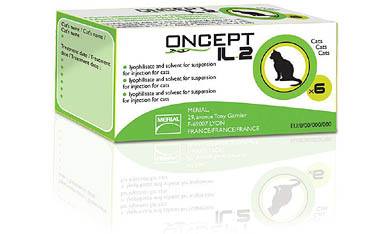More and more friends asked me about the IL-2 situation, and I am here to share relevant scientific knowledge with you. This article is intended only for the dissemination of scientific knowledge.
IL-2 is an abbreviation, and the English full name is Interleukin-2. It is a cytokine of the chemokine family. Cytokines, a protein and polypeptide, are used as signal proteins in organisms. These hormone- or neurotransmitter-like proteins are used as signals for communication between cells. Most of the cytokines are water-soluble proteins and glycoproteins with a small molecular weight (8-30 thousand Daltons). Cytokines can be released from a variety of cells and can act on adjacent cells or the entire body. Of particular importance are the innate immune response and the adaptive immune response. At present, there are 38 kinds of cytokines found in science, which are labeled as IL1-38.

IL-2 plays an important role in the body's immune response and anti-viral infection, and stimulates and initiates the proliferation of immune T cells; and stimulates NK (Natural Killer) cell proliferation, enhances NK killing activity and produces cytokines; B cells proliferate and secrete antibodies.
Therefore, IL-2 itself does not have the function of directly killing viruses and tumors, but IL-2 can activate the immune system, causing a rapid increase in T cells and NK cells, thereby indirectly controlling viral infection and inhibiting tumor growth.
1. Antiviral infection
The scientists conducted a detailed study of the antiviral function of IL-2. First, as early as 2007, scientists pointed out that the use of IL-2 as an immunostimulant can greatly enhance the resistance of test mice to coronavirus (similar to the virus species causing feline FIP) (Academic Study 1). Secondly, in 2013, scientists also studied the resistance of IL-2 to human HIV HIV (similar to cat FIV virus), and concluded that IL-2 can significantly inhibit the replication of HIV virus in human cells (academic research) Literature 2). Therefore, combined with related research reports, IL-2 has great potential in controlling various viral infections (including FIP, FIV).
2. Anti-tumor growth
Since IL-2 can significantly activate the immune system, resulting in the proliferation of a variety of immune cells, IL-2 has been used in the treatment of human tumors at an early stage. In November 1984, a 33-year-old woman with metastatic melanoma received IL-2 treatment after multiple treatment failures. Within one month after treatment, her biopsy of one tumor showed extensive necrosis. After two months, all tumors were shrinking, and after a few months, evidence of all cancers disappeared. The patient has been ill for the next 29 years. She was the first cancer patient to respond to IL-2 administration, so the first pure immunological procedure to stimulate T lymphocytes could mediate complete destruction of a large number of invasive vascularized cancers in humans. The patient and thousands of patients who subsequently received IL-2 played an important role in mainstreaming immunotherapy into cancer treatment, and finally the US FDA approved IL-2 as an anti-cancer immunotherapeutic drug in 1992 (Academic Research Paper 3) ).
However, the application of IL-2 in animals has been slow to study. Until 2014, Merial announced the successful development of IL-2 anti-tumor product Oncept IL-2, the first veterinary immunotherapy in Europe to manage pet cancer. product. This IL-2 is an adjuvant immunotherapy for feline fibrosarcoma. For cats with fibrosarcoma (2-5 cm in diameter) without metastasis to the lymph nodes, IL-2 was indicated to reduce the risk of recurrence and increase the recurrence-free interval. Kevin Whelan, Merials technical manager, commented on the innovative model, after the tumor site was injected, the viral vector entered the cat cell and then produced interleukin-2. The presence of this cytokine stimulates anti-tumor immune responses through a variety of mechanisms, including induction of T lymphocytes and natural killer cells (Academic Research Paper 4).
Academic Research Paper:
1.Hui Hu et al. Induction of Specific Immune Responses by Severe Acute Respiratory Syndrome Coronavirus Spike DNA Vaccine with or without Interleukin-2 Immunization Using Different Vaccination Routes in Mice. Clin Vaccine Immunol. 2007 Jul; 14(7): 894–901. Published online 2007 May 9. doi: 10.1128/CVI.00019-07
2.Oguariri RM et al. Interleukin-2 inhibits HIV-1 replication in some human T cell lymphotrophic virus-1-infected cell lines via the induction and incorporation of APOBEC3G into the virion. J Biol Chem. 2013 Jun 14;288(24):17812-22. doi: 10.1074/jbc.M113.468975. Epub 2013 May 2.
3.Steven A. Rosenberg. IL-2: The First Effective Immunotherapy for Human Cancer.J Immunol June 15, 2014, 192 (12) 5451-5458; DOI:https://doi.org/10.4049/jimmunol.1490019
4.https://www.vetclick.com/news/merial-launches-oncept-il-2-the-first-veterinary-immunotherapeutic-product-in-europe-for-the-management-of-cancer-in-pets-p3213.php



